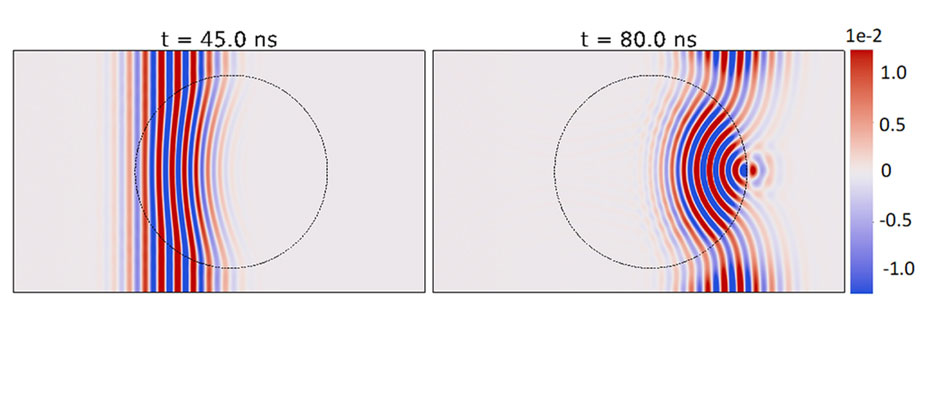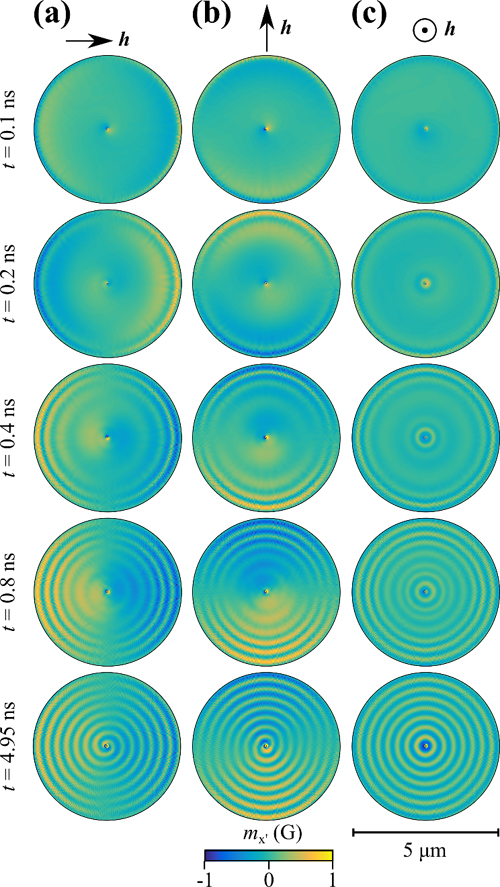Magnonics theory
Research lead: Professor Volodymyr Kruglyak
Postgraduate researchers:
| Natalie Whitehead | Supervisors: Volodymyr Kruglyak, Tom Philbin, Simon Horsley |
| Angus Laurenson | Supervisors: Volodymyr Kruglyak, Jacopo Bertolotti |
| Kevin Fripp | Supervisors: Volodymyr Kruglyak, Feodor Ogrin |
| Oliver Latcham | Supervisors: Volodymyr Kruglyak, Andrei Shytov, Geoff Nash |
Current projects
Below are some examples of the topics we research.
Spin waves in graded magnonic media
Wave excitations of the magnetic order (so called spin waves, quanta of which are called magnons) have an extremely rich and peculiar dispersion, which is nonlinear, anisotropic and non-reciprocal. The spin wave dispersion is very sensitive to the sample’s magnetic properties and micromagnetic state, so that spin waves are rarely observed to propagate in uniform media. Inspired by and feeding from other fields of wave physics, we are developing the theory of spin wave excitation, propagation and control in media with continuously varying properties, i.e. media with a graded magnonic index. This research is not only full of exciting fundamental challenges but may also enable a new, spin wave based technology for data and signal processing.
Snapshots of a spin-wave packet propagating through a magnonic Luneburg lens (dotted outline). The colour scale shows the dynamic magnetisation and is saturated for clarity.

Electromagnetic to spin wave coupling
Spin waves are traditionally excited by electromagnetic waves at frequencies of few to hundreds of GHz. This is however difficult to a huge gap between the wavelength (and therefore momentum) of electromagnetic and spin waves at the same frequency. We are tackling this challenge by developing a theory of spin-wave excitation in media with broken translational symmetry, i.e. via exploiting compositional, geometrical or micromagnetic non-uniformities that my either naturally exist or artificially created in magnonic media or devices. Such non-uniformities are, in fact, ubiquitous in realistic magnonic samples. Hence, our theory also provides insights into how and why spin waves may be unintentionally excited in dynamic magnetic measurements.
Calculated distributions of the dynamic out-of-plane component of magnetisation in a magnetic disk for the indicated time delays after the onset of (a) horizontal, (b) vertical and (c) out-of-plane uniform magnetic field of 12.5 GHz frequency [from C. S. Davies et al, Phys. Rev. B 96, 094430 (2017)].

